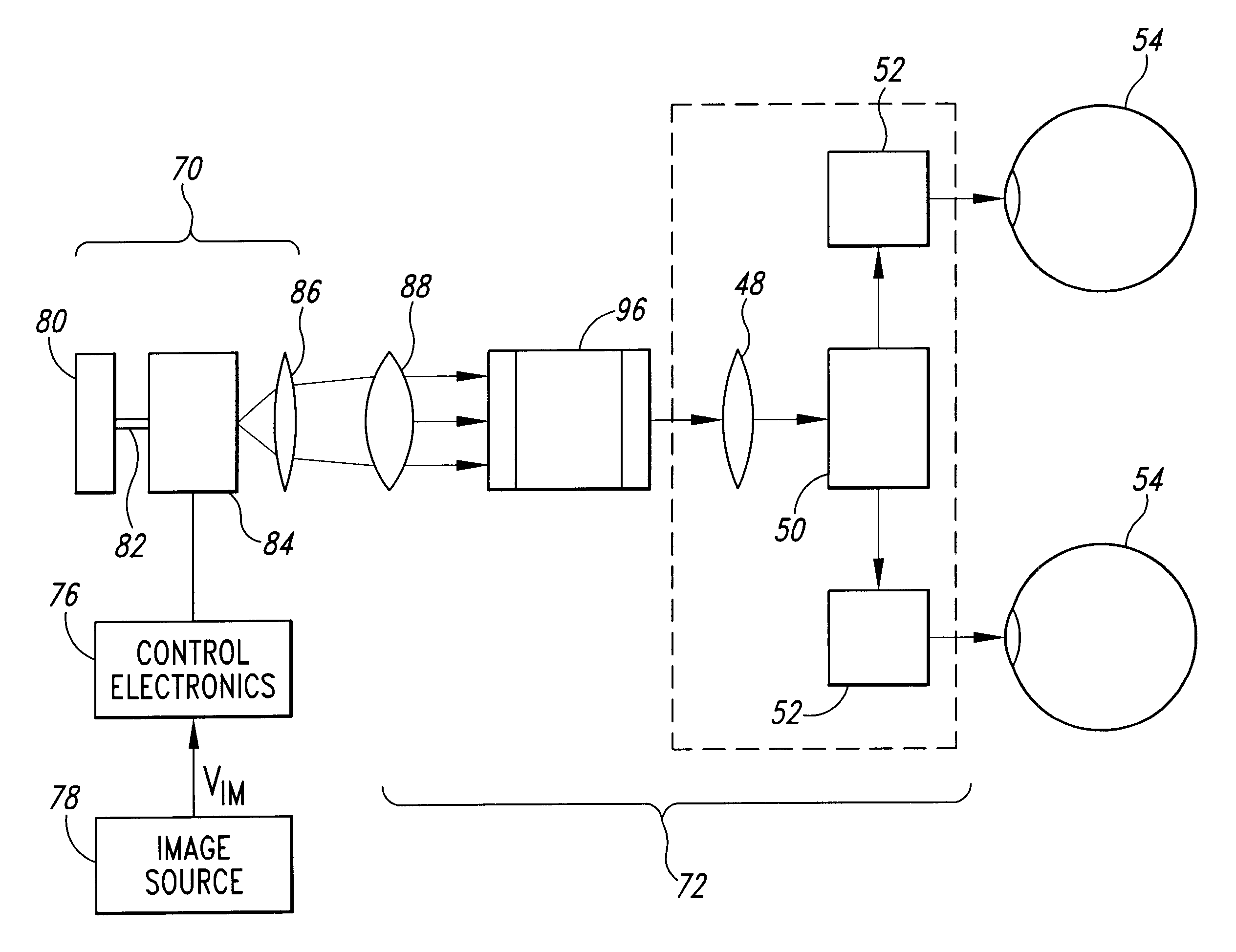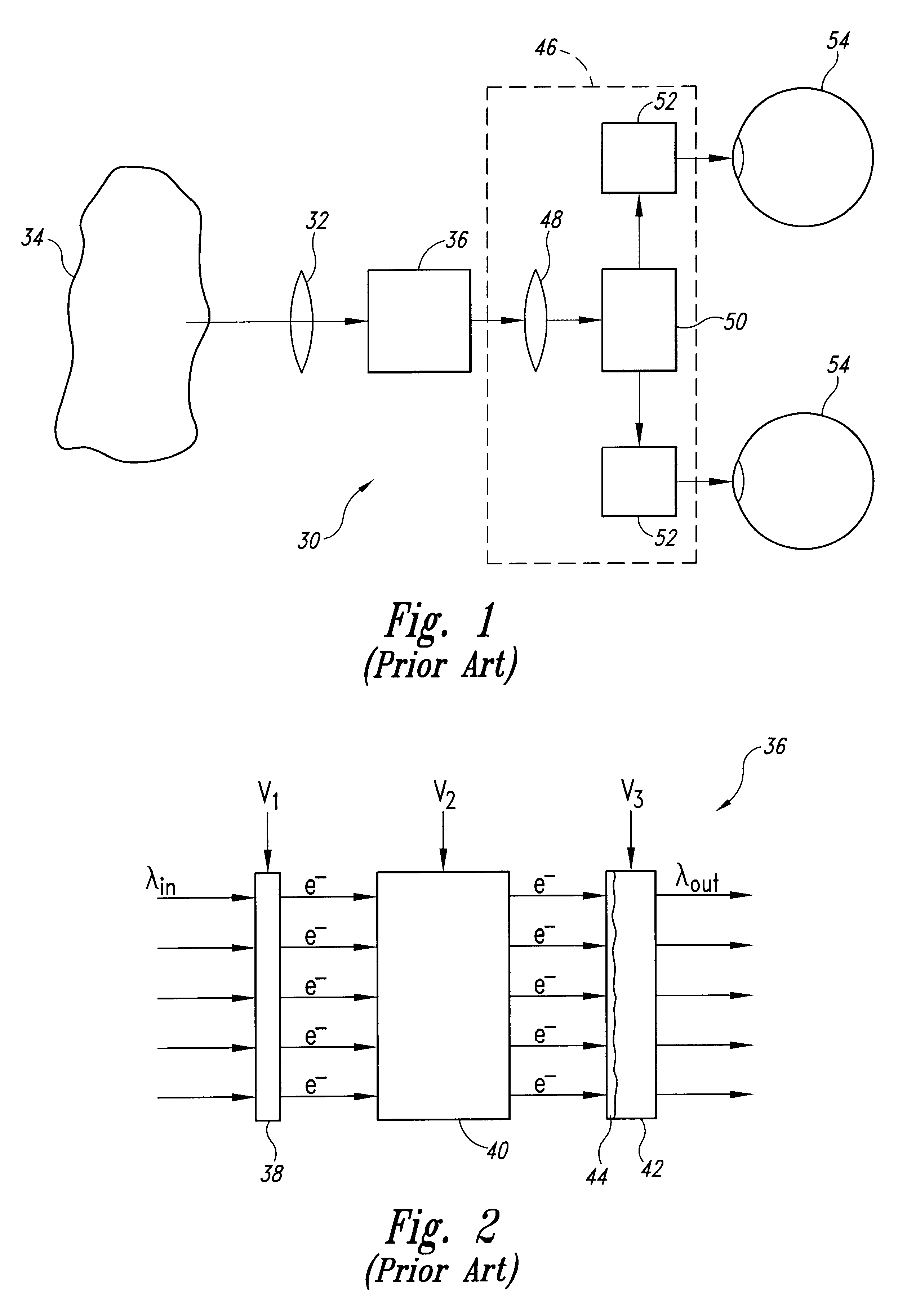Scanned beam display
a beam display and scanning beam technology, applied in the field of low light viewing systems, can solve the problems of mass inducing forces on users, screen b>42/b> typically outputs monochrome light with limited resolution and limited contrast, and users often take time to acclima
- Summary
- Abstract
- Description
- Claims
- Application Information
AI Technical Summary
Benefits of technology
Problems solved by technology
Method used
Image
Examples
Embodiment Construction
[0033]A variety of techniques are available for providing visual displays of graphical or video images to a user. Recently, very small displays have been developed for partial or augmented view applications. In such applications, the display is positioned to produce an image 60 in a region 62 of a user's field of view 64, as shown in FIG. 3. The user can thus see both a displayed image 66 and background information 68.
[0034]One example of a small display is a scanned beam display such as that described in U.S. Pat. No. 5,467,104 of Furness et al., entitled VIRTUAL RETINAL DISPLAY, which is incorporated herein by reference. In scanned displays, a scanner, such as a scanning mirror or acousto-optic scanner, scans a modulated light beam onto a viewer's retina. The scanned light enters the eye through the viewer's pupil and is imaged onto the retina by the cornea. The user perceives an image corresponding to the modulated light image onto the retina. Other examples of small displays inc...
PUM
 Login to View More
Login to View More Abstract
Description
Claims
Application Information
 Login to View More
Login to View More - R&D
- Intellectual Property
- Life Sciences
- Materials
- Tech Scout
- Unparalleled Data Quality
- Higher Quality Content
- 60% Fewer Hallucinations
Browse by: Latest US Patents, China's latest patents, Technical Efficacy Thesaurus, Application Domain, Technology Topic, Popular Technical Reports.
© 2025 PatSnap. All rights reserved.Legal|Privacy policy|Modern Slavery Act Transparency Statement|Sitemap|About US| Contact US: help@patsnap.com



